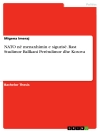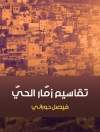This book explores street art’s contributions to democracy in Latin America through a comparative study of five cities: Bogota (Colombia), São Paulo (Brazil), Valparaiso (Chile), Oaxaca (Mexico) and Havana (Cuba). The author argues that when artists invade public space for the sake of disseminating rage, claims or statements, they behave as urban citizens who try to raise public awareness, nurture public debates and hold authorities accountable. Street art also reveals how public space is governed. When local authorities try to contain, regulate or repress public space invasions, they can achieve their goals democratically if they dialogue with the artists and try to reach a consensus inspired by a conception of the city as a commons. Under specific conditions, the book argues, street level democracy and collaborative governance can overlap, prompting a democratization of democracy.
Jadual kandungan
Chapter 1: Introduction.- Chapter 2: Analytical framework.- Chapter 3: Bogota. Public space between appropriation and deliberation.- Chapter 4: São Paulo. Pixadores’ public scream of hate.- Chapter 5: Valparaíso. A tale of murals, tags and world heritage.- Chapter 6: Oaxaca. Revolutionary art and the (difficult) quest for democracy.- Chapter 7: Havana. Going public, no matter what.- Chapter 8: Conclusion. Street art and democracy. Lessons learned.
Mengenai Pengarang
Olivier Dabène is Professor of Political Science at the Paris Institute of Political Studies (Sciences Po). He is also Senior Researcher at the Center for International Studies (CERI) and President of the Political Observatory of Latin America and the Caribbean (OPALC), both at Sciences Po, France.












